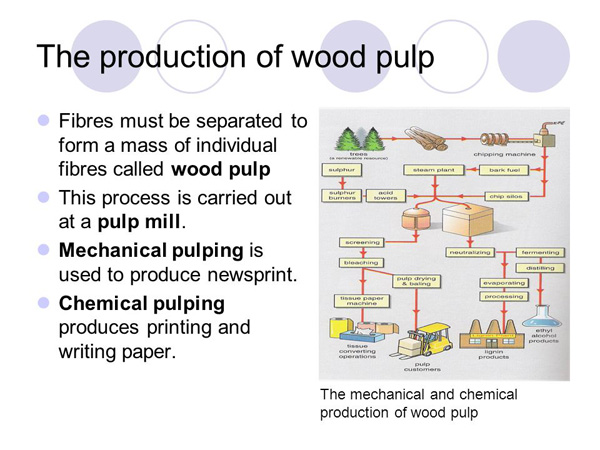What is the type and process of pulp
Pulp types
Pulp is made from some plants. It is the basic raw material of paper making. Plants usually made from pulping can be divided into 4 broad categories: stem fiber, phloem fiber, seed wool fiber and wood fiber. In particular, wood fibers are the most important. Timber resources in China can not meet the needs of the growing pulp and paper industry. In order to make up for the shortage of raw materials, a considerable amount of pulp is imported from outside the country every year.
Pulping process
Pulping refers to the use of chemical methods, mechanical methods or a combination of methods to make plant fiber raw material dissociation into a natural color or bleached pulp production process.
Types and uses of Pulp
Mechanical wood pulp
Mechanical wood pulp, also called grinding wood pulp, is a pulp made by mechanical grinding of fiber raw materials. It occupies an important position in the paper industry. It has low production cost, simple production process, strong ink absorption, high opacity, soft and smooth paper. Suitable for printing requirements. However, the strength of paper is low because of short fiber and high content of non-cellulose components. In addition, because most of the lignin and its non-cellulose in the wood have not been removed, the paper produced by it is easy to become yellow and brittle and can not be preserved for a long time.
Mechanical pulp usually refers to white mechanical pulp and brown mechanical pulp. White mechanical wood pulp is mainly used to produce newsprint, but it can also be used in other pulps to copy writing paper and printing paper. Brown mechanical wood pulp is mainly used in the production of packaging paper and paperboard, especially industrial paperboard.

Sulphate wood pulp
Sulphate wood pulp is a mixture of sodium hydroxide and sodium sulfide as cooking agent. In the cooking process, because the action of the liquid is gentle, the fiber is not strongly eroded, so the paper is strong, and the paper has excellent flexural, breaking and tearing strength. It can be divided into white and unbleached generally. Unbleached sulphate pulp can be used to manufacture sulphate paper, bag paper, sulphate carton paper and general wrapping paper and paperboard. Bleached sulphate pulp can be used to produce high-grade printing paper, drawing newspaper, offset paper and writing paper.
Sulfite wood pulp
Sulfite wood pulp is a mixture of sulfite and acid sulfite as cooking agent. The pulp has long fiber, soft properties, good toughness, high strength, easy bleaching and excellent interweaving ability. According to its refining degree, it can be divided into three kinds: unbleached, semi-bleached and bleached.
Unbleached pulp contains a small amount of lignin and colored impurities, so it is yellow and the fiber is hard. It is used for medium printing paper, thin wrapping paper, translucent paper and oil-proof paper.
Half-bleached pulp contains a lot of pentose, so make transparent tracing paper and parchment imitation paper.
The fiber of bleached pulp is white, pure and soft, but the strength of bleached pulp is lower than that of unbleached pulp. This kind of pulp is used to make all kinds of high-grade paper.
Pulp composition
Cellulose is the main component of the pulp fiber, in addition to hemicellulose, lignin, resin, pigment, pectin and ash and other substances. Cellulose and hemicellulose are the basic components of pulp, while the other components are removed.
Main performance index of pulp
There are many properties of pulp, which can be divided into physical and chemical properties. The physical property is the important index to judge the value of pulp, among which tensile strength, breaking strength and tear strength are the main evaluation indexes of imported pulp. At present, the larger amount of imports are bleached sulphate pulp, unbleached sulphate pulp, bleached sulfite wood pulp and mechanical wood pulp.

